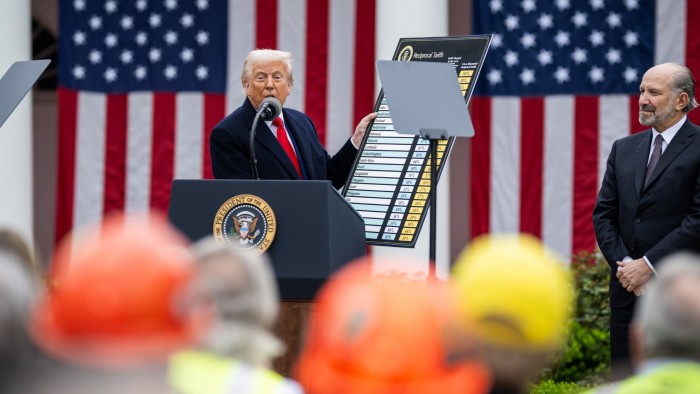Physical Address
304 North Cardinal St.
Dorchester Center, MA 02124
Physical Address
304 North Cardinal St.
Dorchester Center, MA 02124

Unlock FREE White House Watch Newsletter
Washington, Trump’s second word for business and the world is your guide for that
According to international law experts, legal options are limited to imposing Donald Trump’s global tariffs after Wednesday’s court verdict.
The United States International Trade Verdiers have determined that Trump abused the Emergency Economic Power Act during the announcement of a blanket last month, which was designed to shrink trade deficit with various countries around the world.
Legal experts said the court had determined that the International Emergency Economic Energy Act (IEPA) was clearly designed to address the balance of payment, and therefore Trump had to return to alternative legal ways.
Land Bartels, a professor at the University of Cambridge University, said the verdict was a powerful historical tihasik case that the law was passed in the cool war to deal with national security issues – could not be used to deal with the balance of trade issues.
Instead, the court pointed to other laws-Article 122 of the Trade Act of 1973, which was designed to impose temporary tariffs to address the “deficit” of “larger and serious US balances”.
However, Article 122 provided only very limited powers, added Bertels, enable the President to impose up to 5 percent of the United States before further approval from the US Congress.
Bartels said, “This verdict is very clear that the path to deal with the balance of trade issues is Article 122, but the challenge for Trump is limited. So legally, its best bet is to change the law to remove the limits of S122,” Bartels said.
The court verdict did not invalidate the so -called section 232 tariff, currently covering steel and aluminum and autos, which both Trump and Biden administration have successfully used strategically important sectors based on national protection.

The Trump administration is investigating Article 232 in other sectors, including Pharmaceuticals and space. They can lead to more significant tariffs, but Trump is not the broad -based type that was collected in all countries with 10 percent baseline last April.
According to Mona Palsen, assistant professor of International Economic Law of the London School of Economics, other ways of this approach may include Article 5 of the Tariff Act of 19300.
The law, which has never been used, gives the President the power to impose tariffs if US businesses suffer unjust discrimination – “any irrational complaint, exercise, control, or limitations” – in the hands of a foreign force.
The tariffs are tied to 50 percent, the same image was briefly threatened with the EU last Friday, before agreeing to delay the duties two days later.
Palsen said that Trump had 5 percent of the potential significance of the choice. Palsen said, “For me and other trade law observers, when Trump imposed 5 percent tariff on the EU, we were wondering if he was in the boundary of that section,” Palsen said. “Did the President show his hand there?”
The third option is to use Article 5 of the Trade Act of 1971, which overlap with Article 1. It allows US trade representatives to impose tariffs on countries that violate the international existing trade agreement in a “discriminatory” way.
The first Trump administration used it in 2018 to impose tariffs on various Chinese imports in the United States on the basis of forcing technology to transfer technology and other violations of intellectual property rules.
The court’s decision called on Trump to return to the Congress to implement the tariff as part of its showpiece tax bill. It was passed by a single vote last week by US representatives, but should still vote by the Senate.
Charles Benoit, a trade consultant for a prosperous American, is a bilateral trade group representing US domestic producers and workers, who argue that Trump’s tariffs will benefit from proper legal action.
In a video posted on X, he said, “We are planning to raise 3 tariffs in the next decade and you are about to rely on IIPP Act?